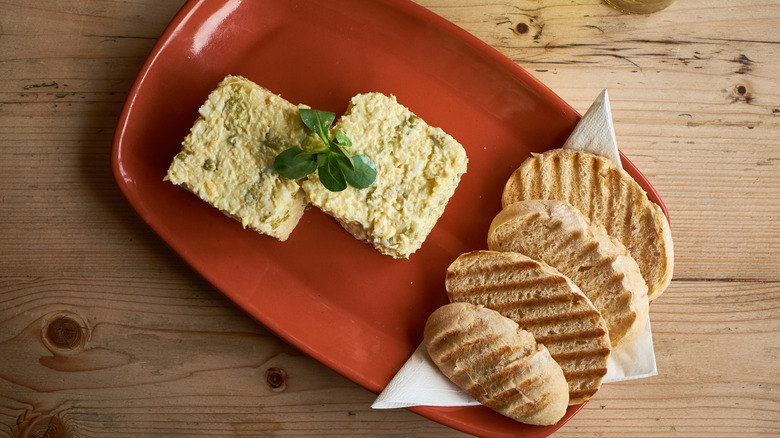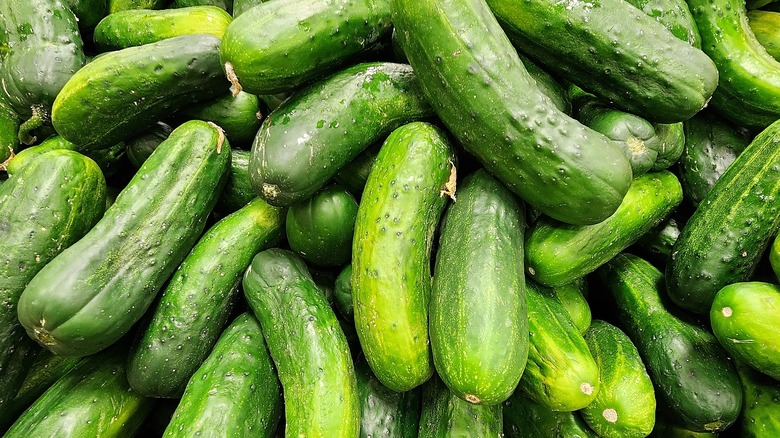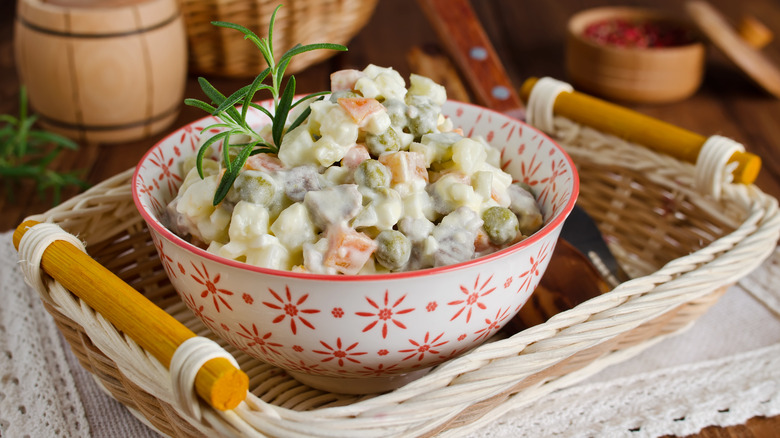What Makes Persian Chicken Salad Truly Unique?
Dating back to the sixth century B.C., Persian, or Iranian, cuisine is an unfolding story of culture, local ingredients, and history. It's a culinary crossroads where interconnecting flavors from the Silk Road all the way to Egypt and Greece met and formed the dishes that now dazzle like jewels. Persian dishes feature a mixture of aromas characterized by abundant fresh herbs and dynamic spice combinations. They also exhibit a playful balance between sweet and sour, notably evident in a dish called salad Olivieh, also known as a Persian chicken salad.
This Persian chicken salad holds similarities to a Russian potato salad. What makes it utterly distinct from the Russian salad Olivier is the shredded chicken breast. While recipes vary for a Persian chicken salad, it's typically filled with smooth mashed potatoes, finely diced pickles, chopped hard-boiled eggs, sweet peas, tangy mayonnaise, and shredded chicken breast. The salad is then garnished with fresh herbs like dill or parsley, radishes, olives, or extra sliced pickles. The result is a tangy, sweet, smooth, and deliciously savory meal.
Other unique characteristics of salad Olivieh
With the mention of chicken salad, you may have envisioned the usual combination of chopped chicken breast with creamy mayonnaise, crunchy celery, a sharp acidity from vinegar or lemon, and the heat of freshly cracked black pepper. While the Persian variety incorporates some of these ingredients, it also delivers a sweet dimension from the addition of the peas.
While it may seem to reach a middle ground between potato and chicken salad, the Persian chicken salad's ingredients also testify to its originality. Persian dill pickles, or khiar shoor (meaning salty cucumber in Farsi), are typically used in its creation. Unlike some varieties of dill pickles, which have a sweet disposition, Persian pickles contain no added sugar and instead have a distinct punchy flavor that's intertwined with spicy, garlicky, and sour aromas. The Persian pickle's texture is also contrasting, as their thinner skin gives them a slightly different bite. For some, a Persian chicken salad will not taste authentic unless Persian pickles are used. Lastly, a Persian chicken salad is usually chilled before serving, unlike some warm potato salad variations.
Origins of salad Olivieh
Tracing the origins of the Persian chicken salad is a fantastic way to see how influential different cultures have been on the cuisine. This salad is a descendant of the well-loved Russian potato salad, which was created in 1860 by Lucien Olivier, a French-trained chef who ran the famous and upscale Hermitage restaurant in Moscow. His original recipe for the salad called for luxurious ingredients, such as smoked duck, grouse, crayfish, truffles, and саѵіаr. During the formation of the Soviet Union, potatoes, peas, and pickles became the staples of this dish, making it more affordable and easily accessible.
So when did it make its way to Iran? It's believed that Iranians adapted the salad from neighboring Russia in the early 19th century. It's now a cherished dish that's specifically consumed on Sizdah Bedar, the final day of Nowruz, or the Persian New Year. However, it's also enjoyed as a picnic go-to, a delicious sandwich filler, or as part of a mezze spread.
Persian chicken salad is a truly unique dish, reflecting the delicious flavors and influences in Persian cuisine. It can't be missed if you ever have the opportunity to try it.


